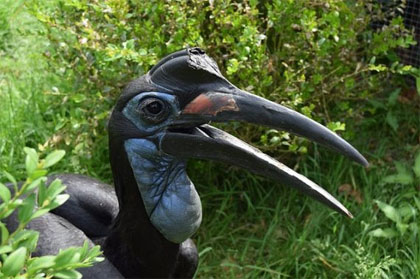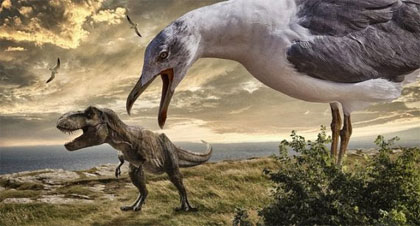
Lost World of Unique Prehistoric Birds Found Near the Great Wall of China
Paul Seaburn February 21, 2022
The Great Wall of China is perhaps the most studied structure in the world and its impact on the areas it runs through was unprecedented. However, there was life in that area before the Great Wall and a recent discovery by archeologists digging near the wall’s west end shows how little we really know about it. Paleontologists examining fossils at Changma, 80 miles from the wall’s western end are now calling it a ‘lost world’ of birds that lived 120 million years ago … and they’ve identified a number of new and unusual species.
“These fossils come from a site in China that has produced fossils of birds that are pretty darned close to modern birds, but all the bird fossils described thus far haven’t had skulls preserved with the bodies. These new skull specimens help fill in that gap in our knowledge of the birds from this site and of bird evolution as a whole.”
 Some modern birds like this ground hornbill still look like dinosaurs.
Some modern birds like this ground hornbill still look like dinosaurs.
In a new study published in the Journal of Systematics and Evolution, co-author Jerald Harris from Utah Tech University unveils the first unique aspect of this ‘lost world’ – skulls. Birds are the most fragile of prehistoric remains and skulls are extremely rare, which makes determining what they ate, how they ate it, brain size and other key characteristics impossible. In addition, while much is know about the small group of dinosaurs which evolved into the birds that became modern birds, little is known about the birds that didn’t survive the dino-killing extinction. Jingmai O’Connor, lead author and the associate curator of vertebrate paleontology at Chicago’s Field Museum, points out in the press release that the ‘lost world’ helped find some.
“It was a long, painstaking process teasing out what these things were. But these new specimens include two new species that increase our knowledge of Cretaceous bird faunas, and we found combinations of dental features that we’ve never seen in any other dinosaurs.”
One new genus (a step above species) is Brevidentavis zhangi — brevidentavis means “short-toothed bird” and this one had a mouth tightly packed with small, peg-like teeth. (An illustration of what they may have looked like can be seen here.) Ornithuromorph birds with teeth had what looks like a chin bone that didn’t move, but this unusual Brevidentavis zhangi had cartilage attached to the bone, which showed evidence of stress. That means it moved and was able to feel what it touched.
“It could have helped them detect prey. We can hypothesize that these toothed birds had little beaks with some kind of movable pincer at the tip of their jaws in front of the teeth.”
O’Connor thinks this made Brevidentavis zhangi a predator – possibly of some of the other species in the ‘lost world’ like the Gansus, the first known true Mesozoic bird in the world. The site contained at least four Gansus skulls. Tom Stidham, another co-author from the IVPP (Institute of Vertebrate Paleontology and Paleoanthropology) in Beijing, eloquently describes the significance of this discovery.
 Now THAT’S a predator!
Now THAT’S a predator!
“At a time when giant dinosaurs still roamed the land, these birds were the products of evolution experimenting with different lifestyles in the water, in the air, and on land, and with different diets as we can see in some species having or lacking teeth. Very few fossils of this geological age provide the level of anatomical detail that we can see in these ancient bird skulls.”
The Great Wall is great because of its size and contribution to Chinese history. The Changma fossil site just made a great contribution to Chinese prehistory. Is it time to start calling it the Great Lost World of China?
MU*





















